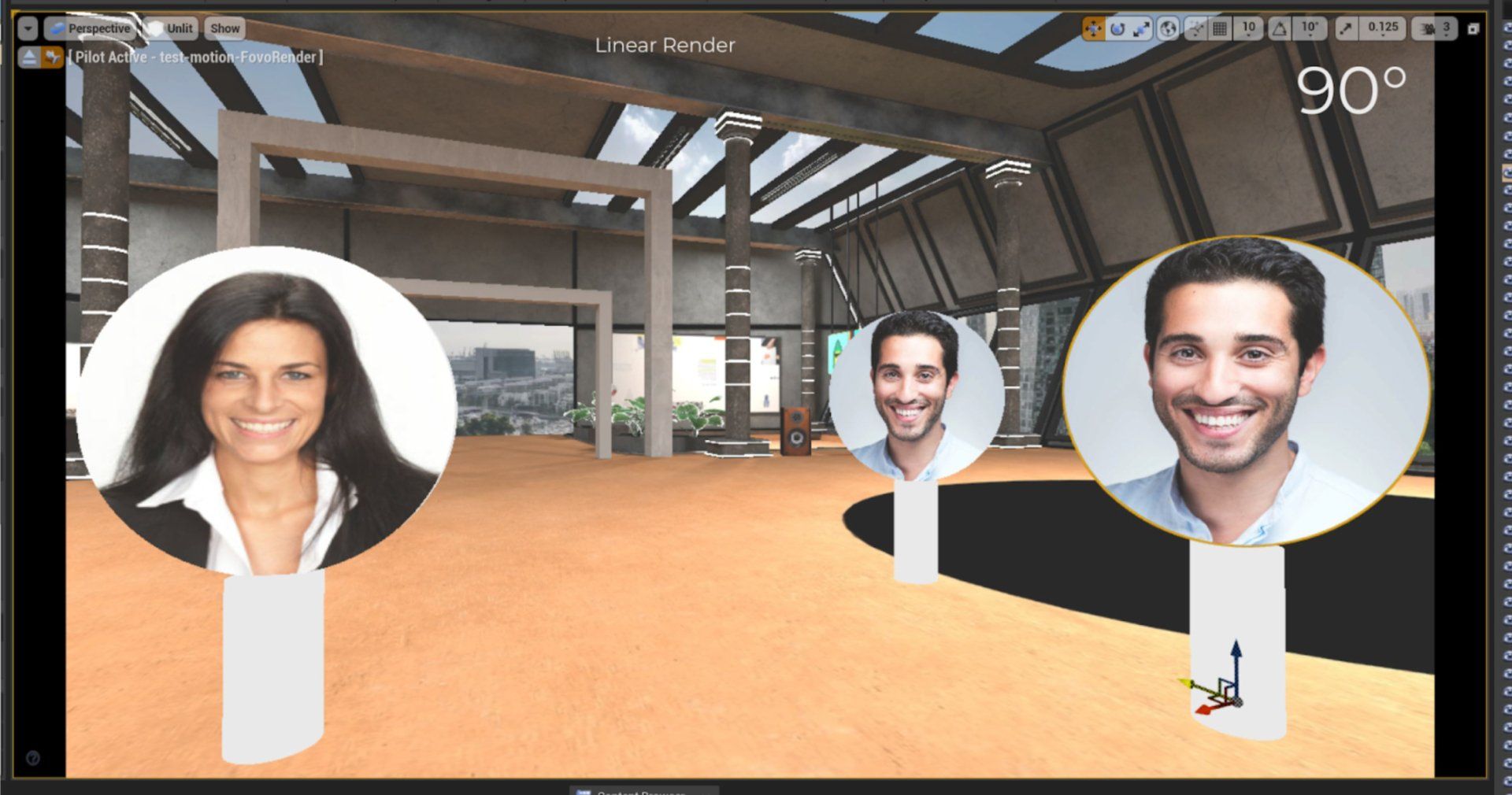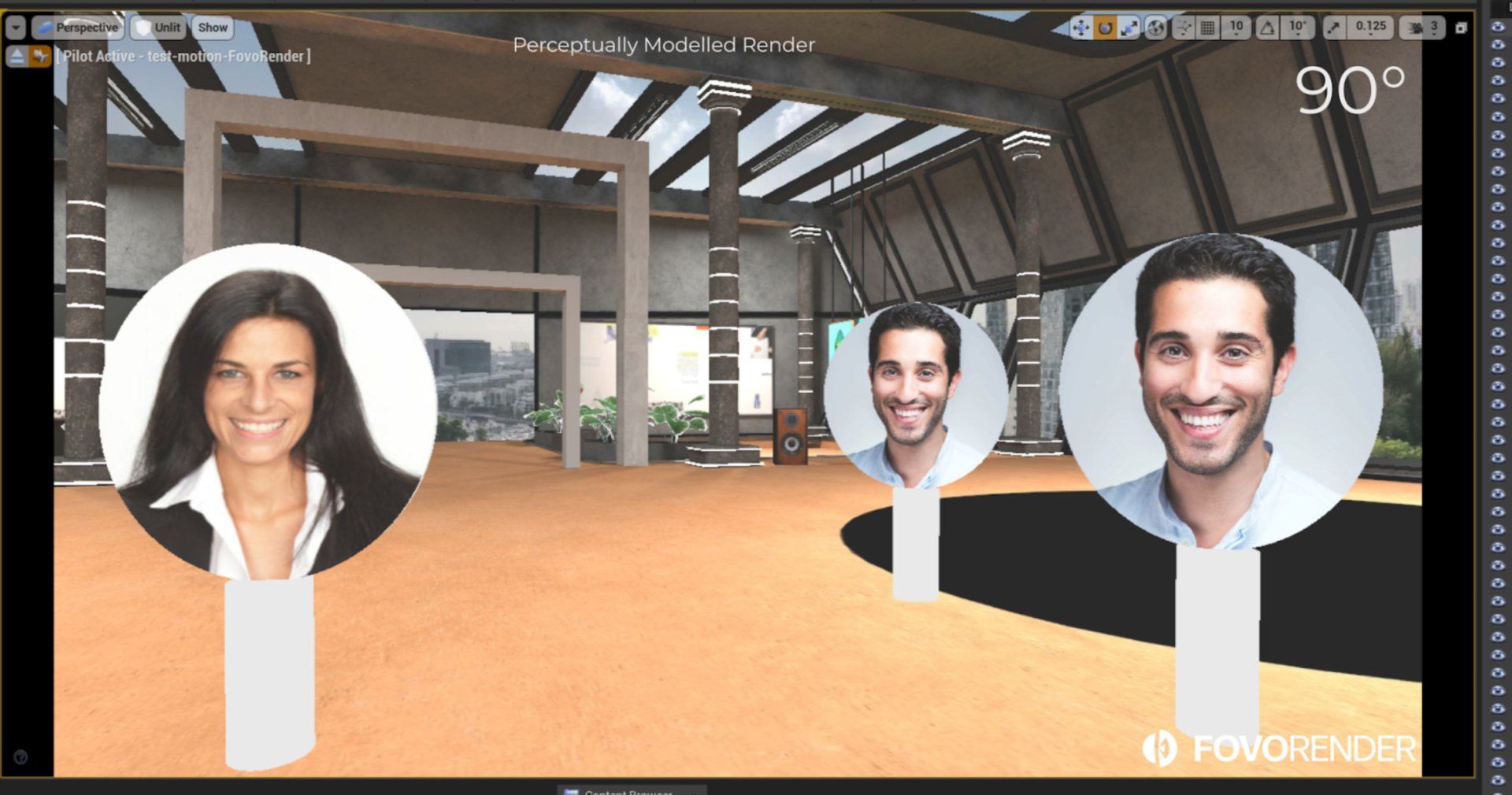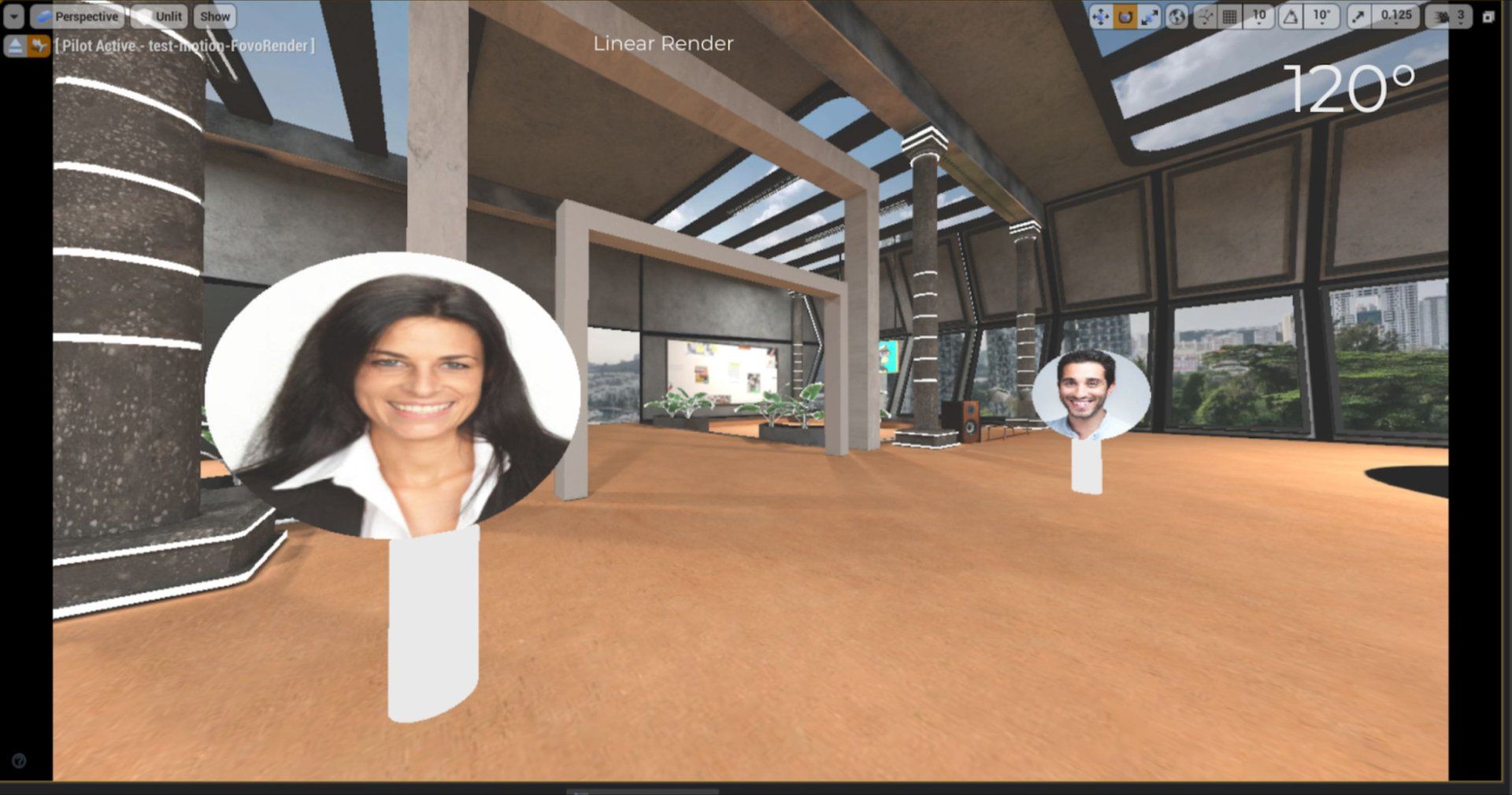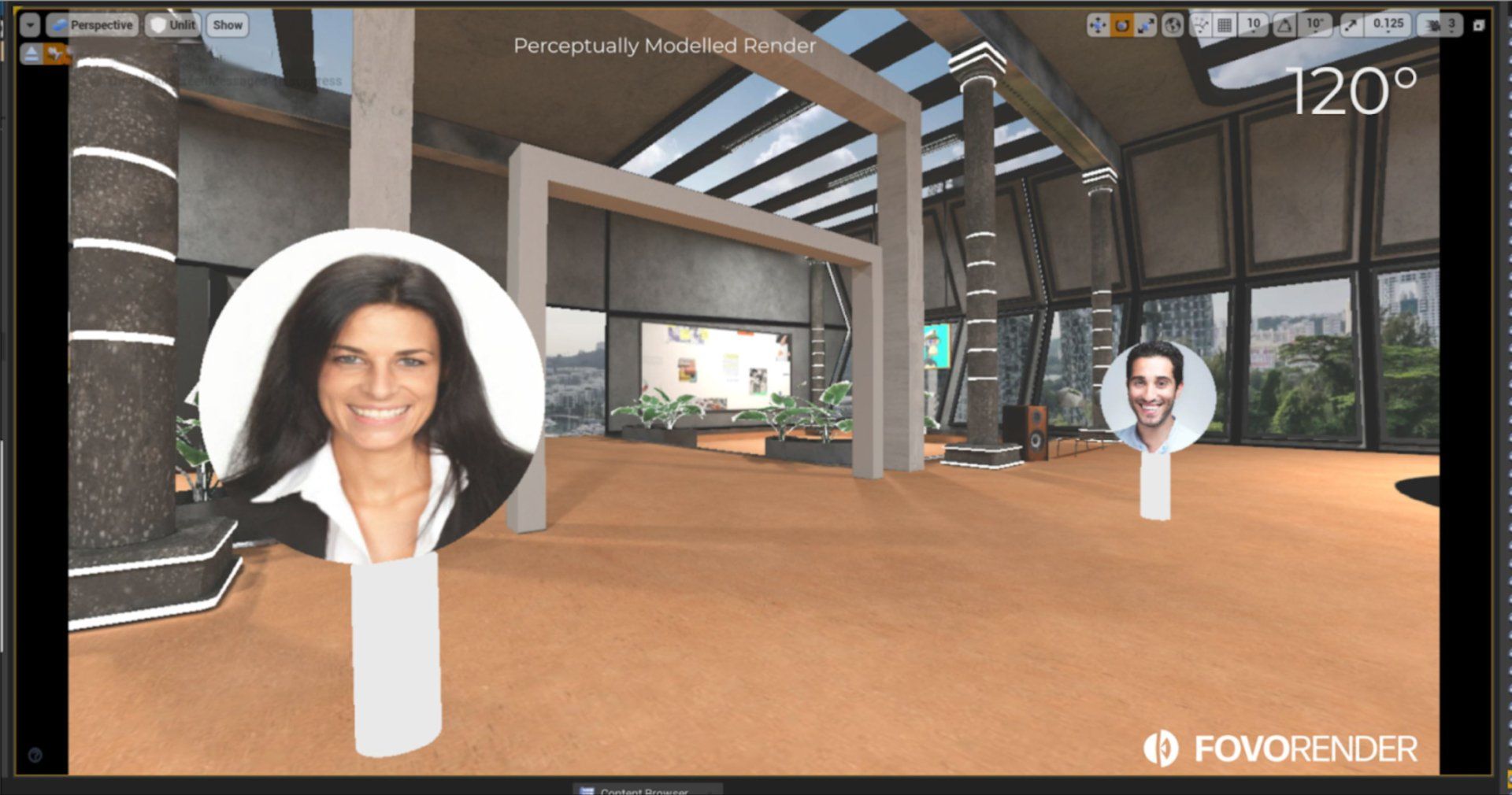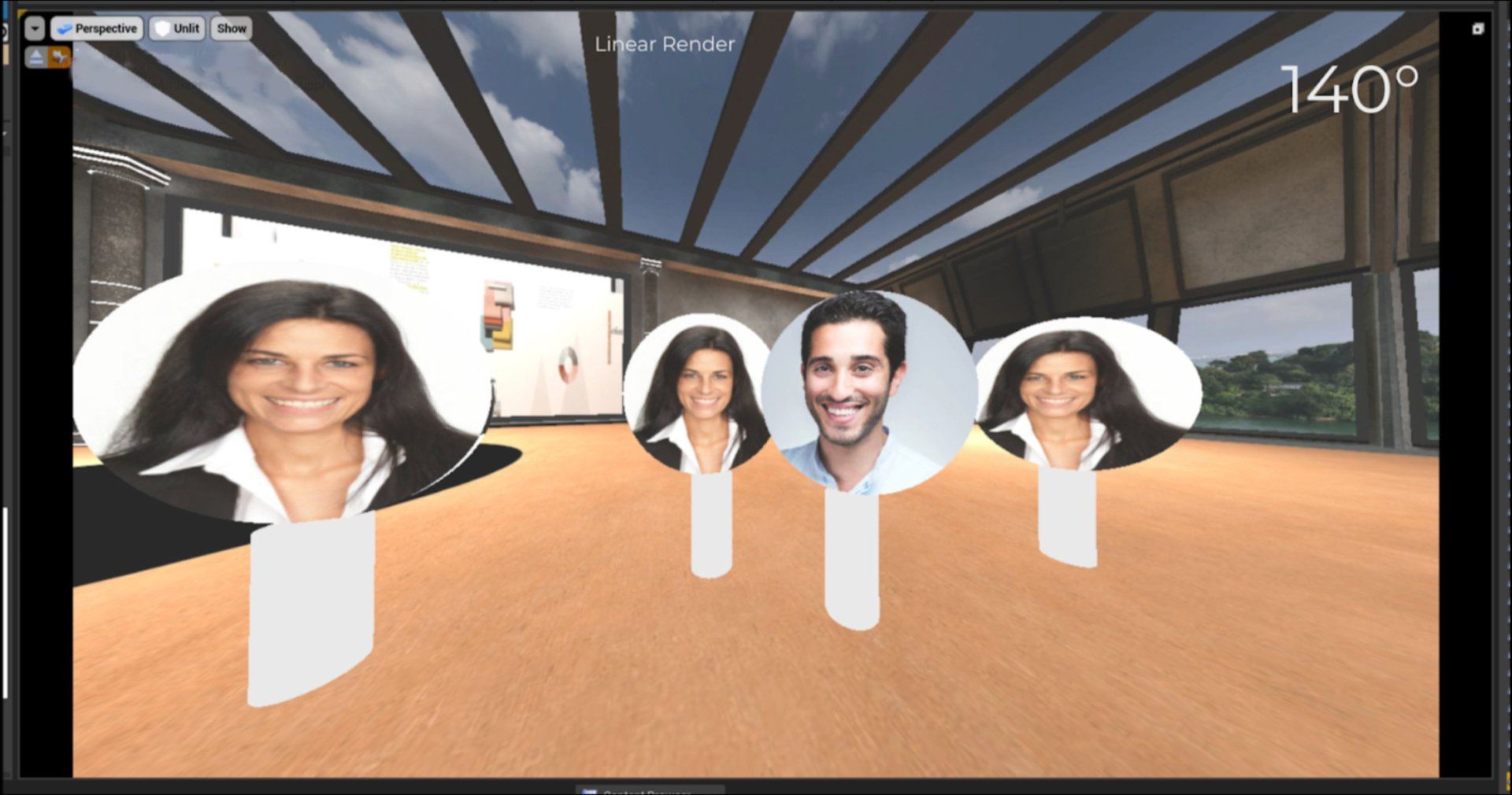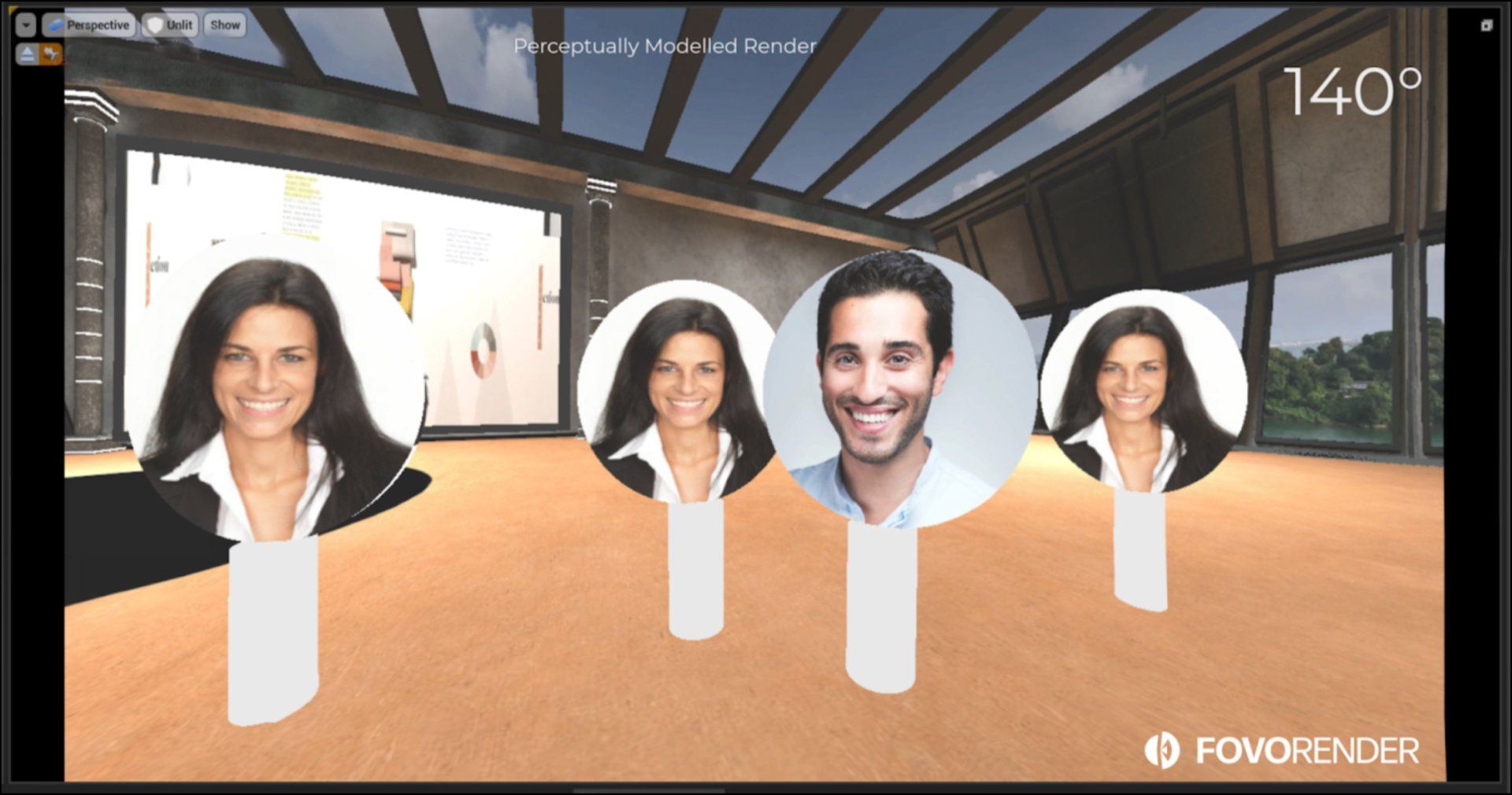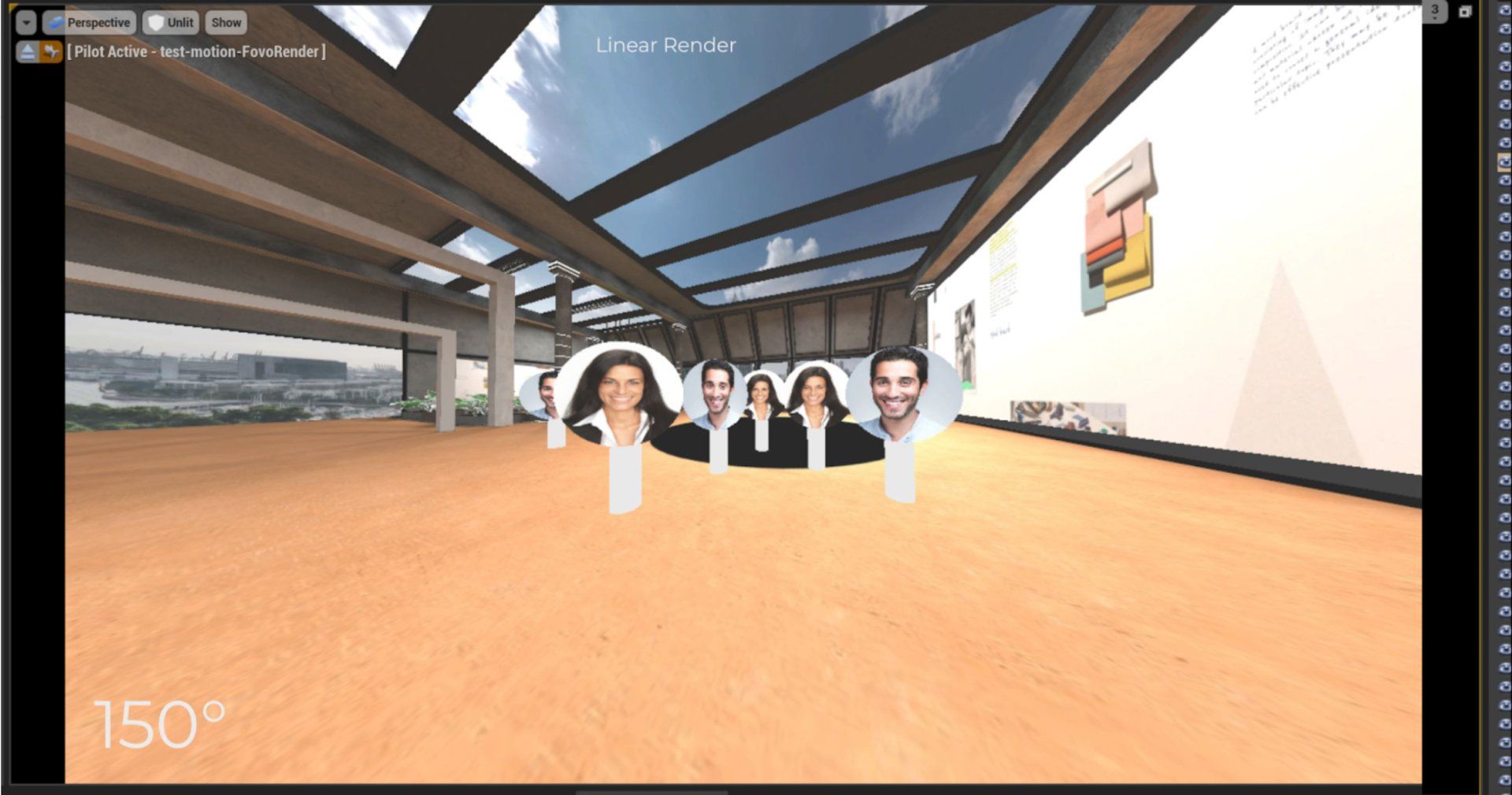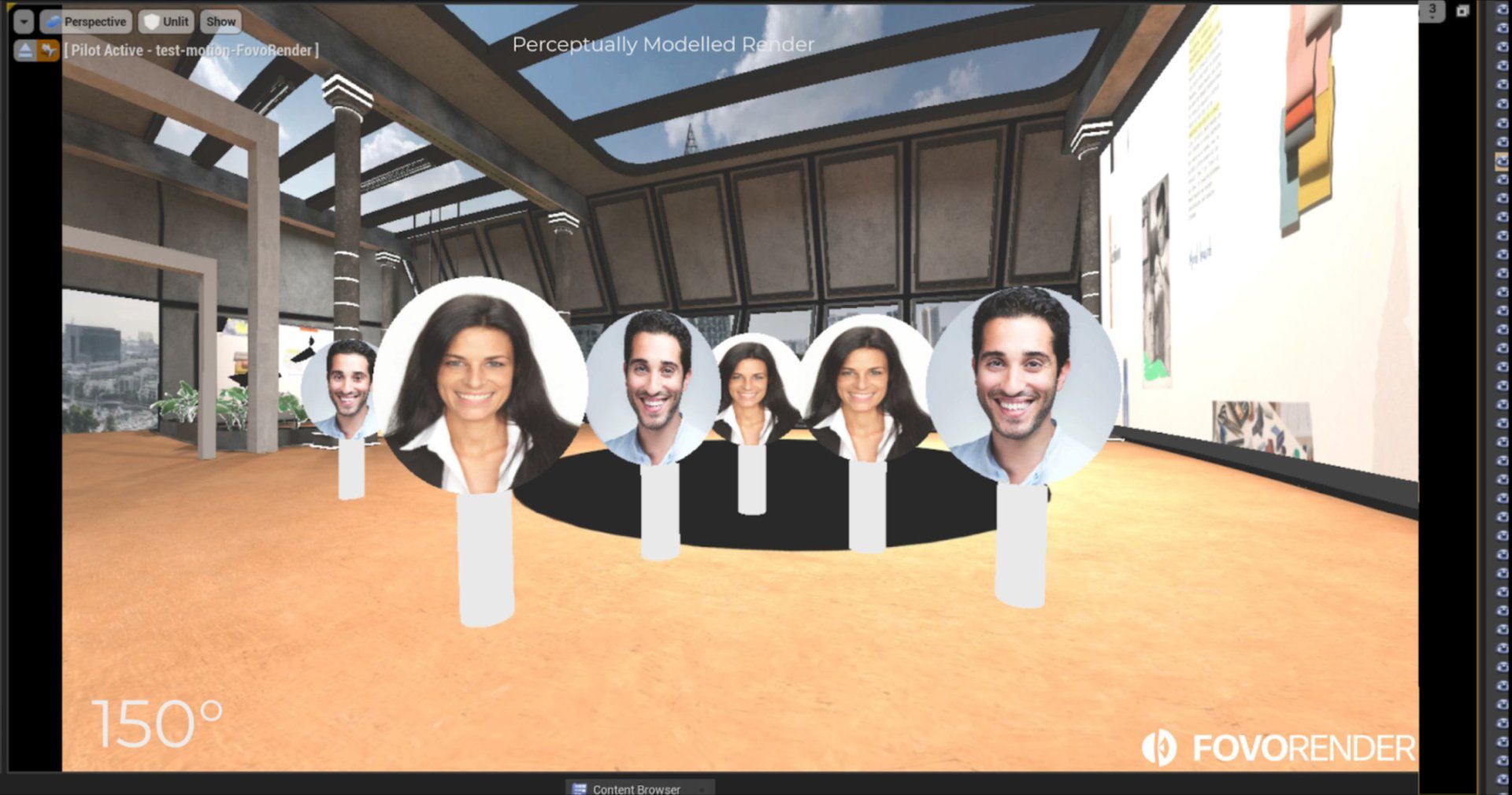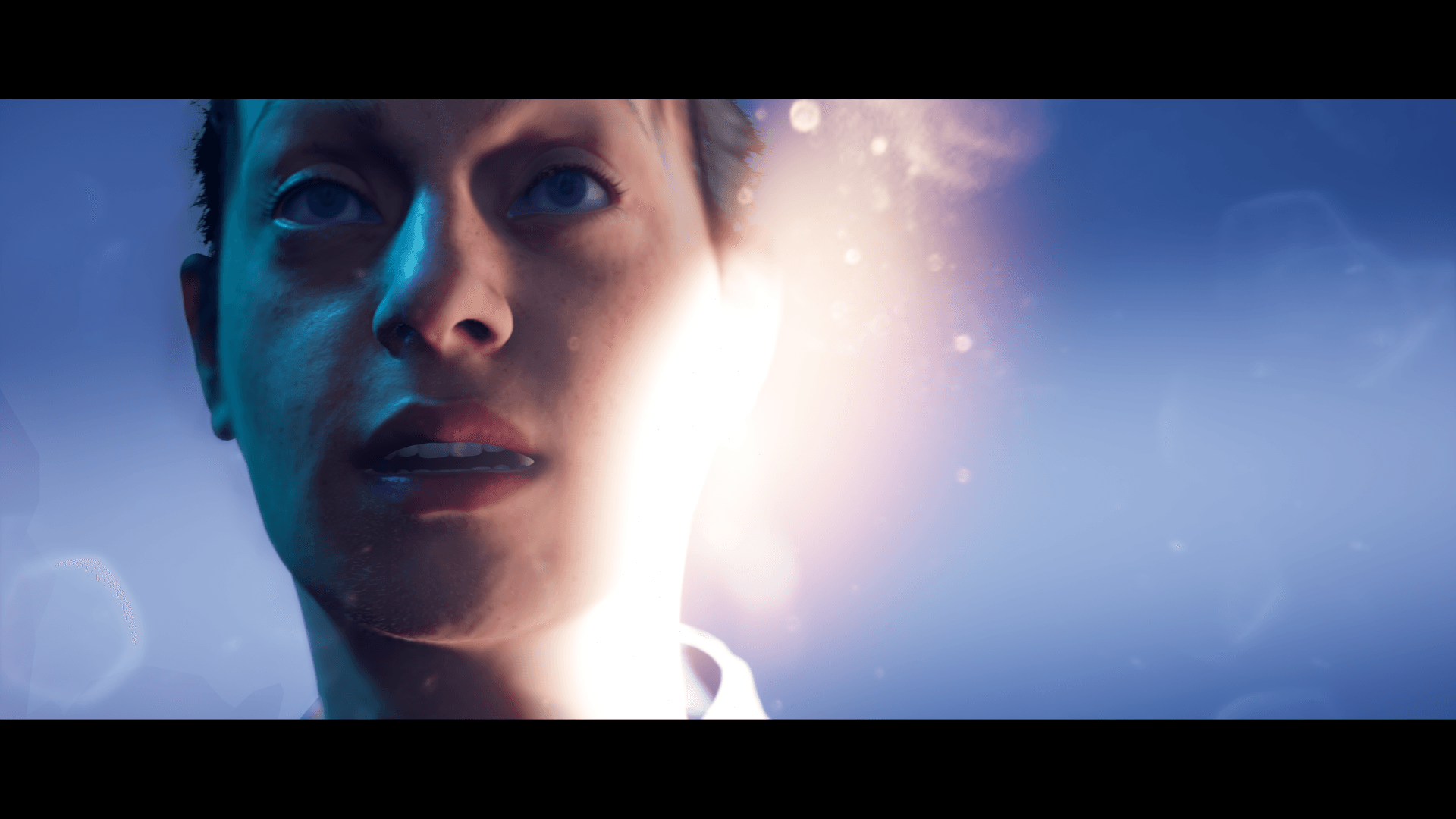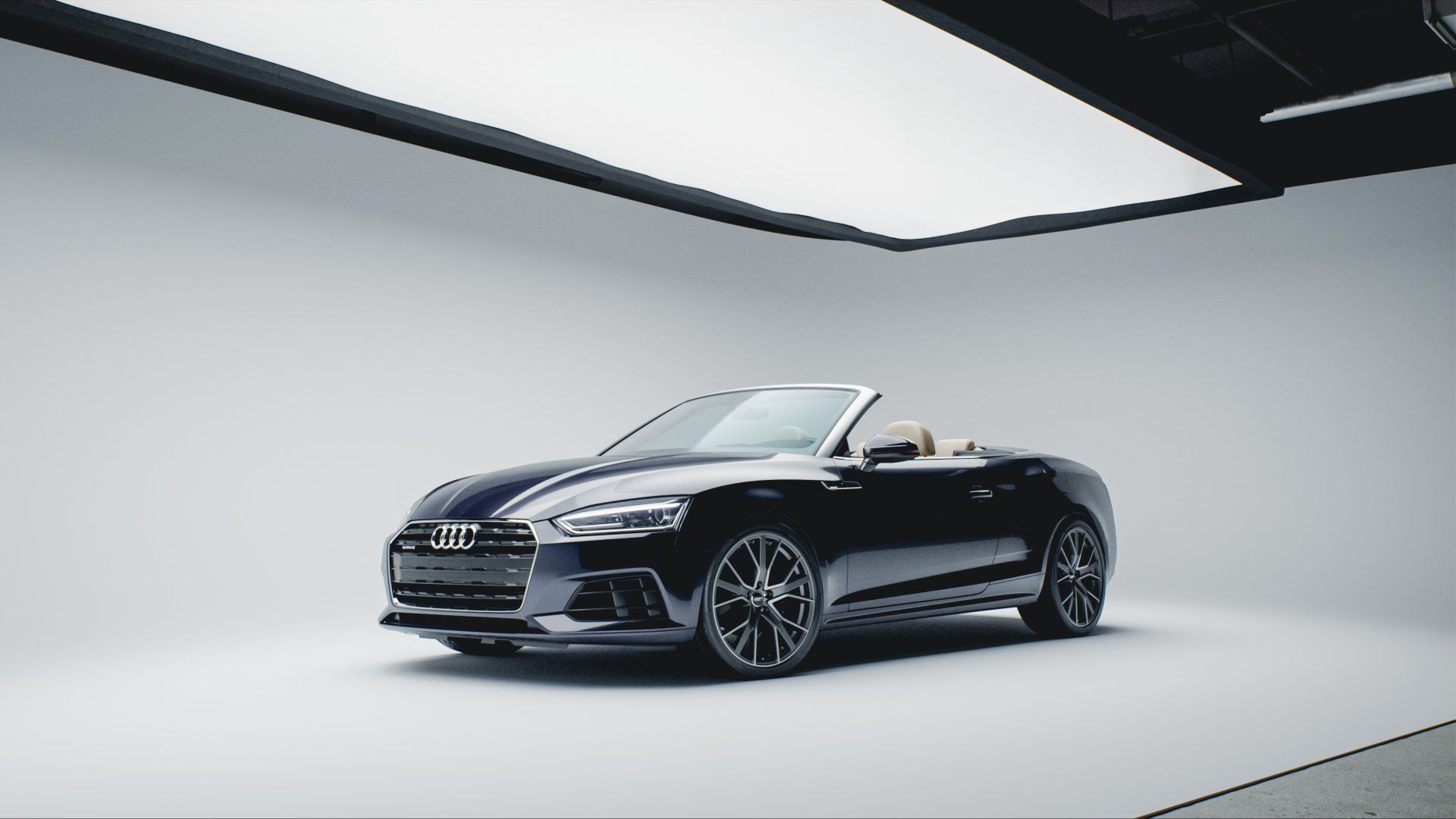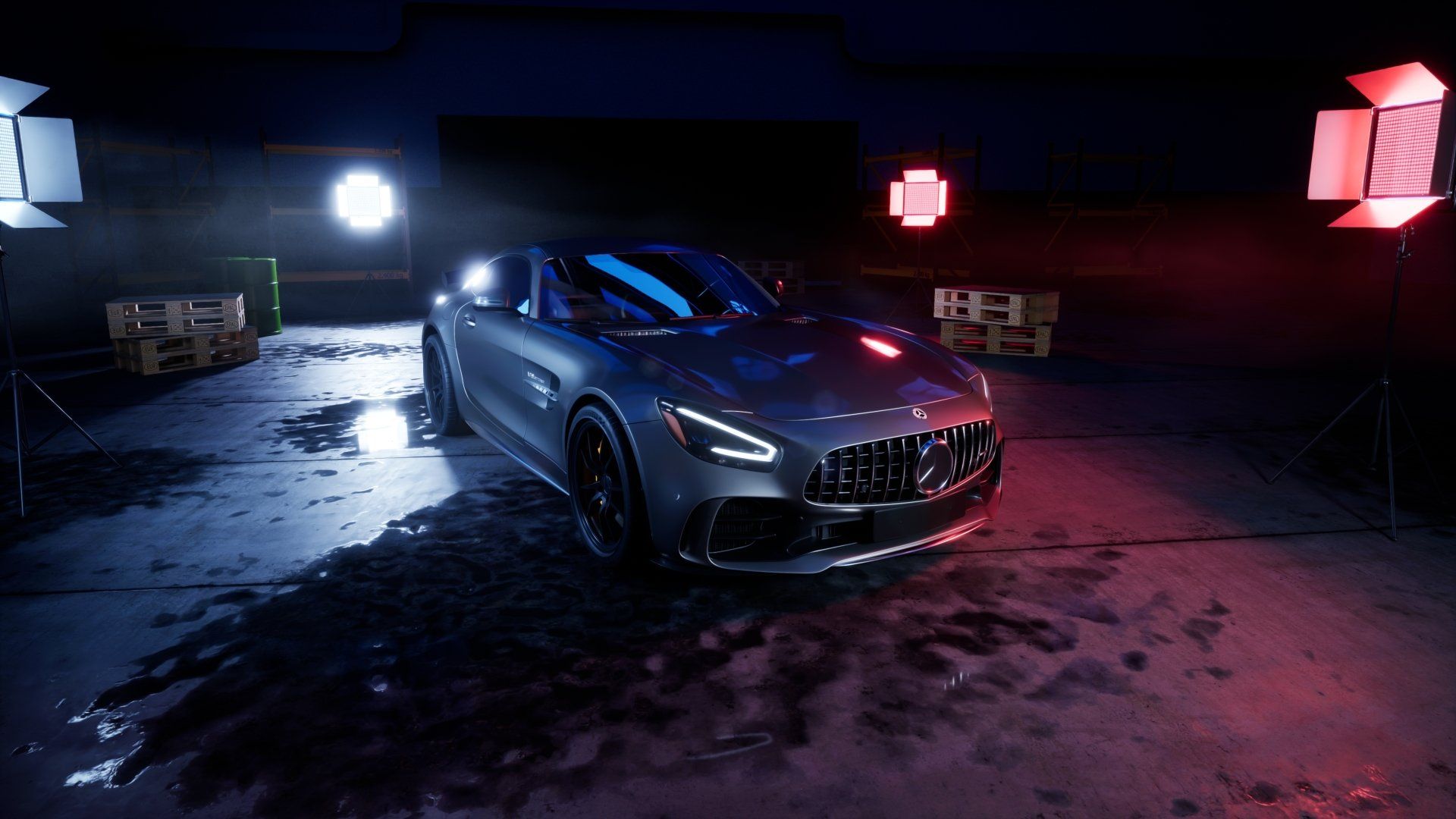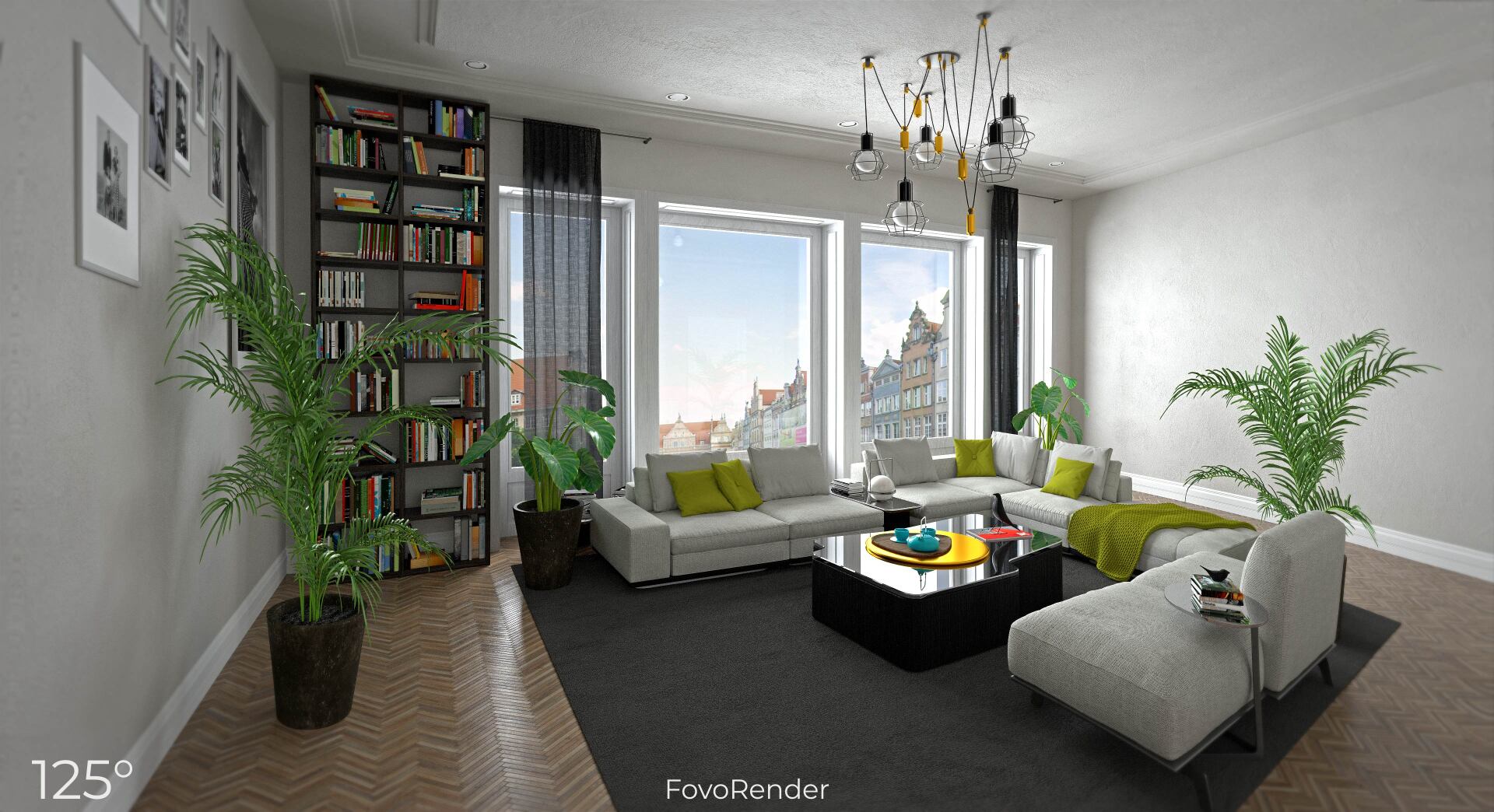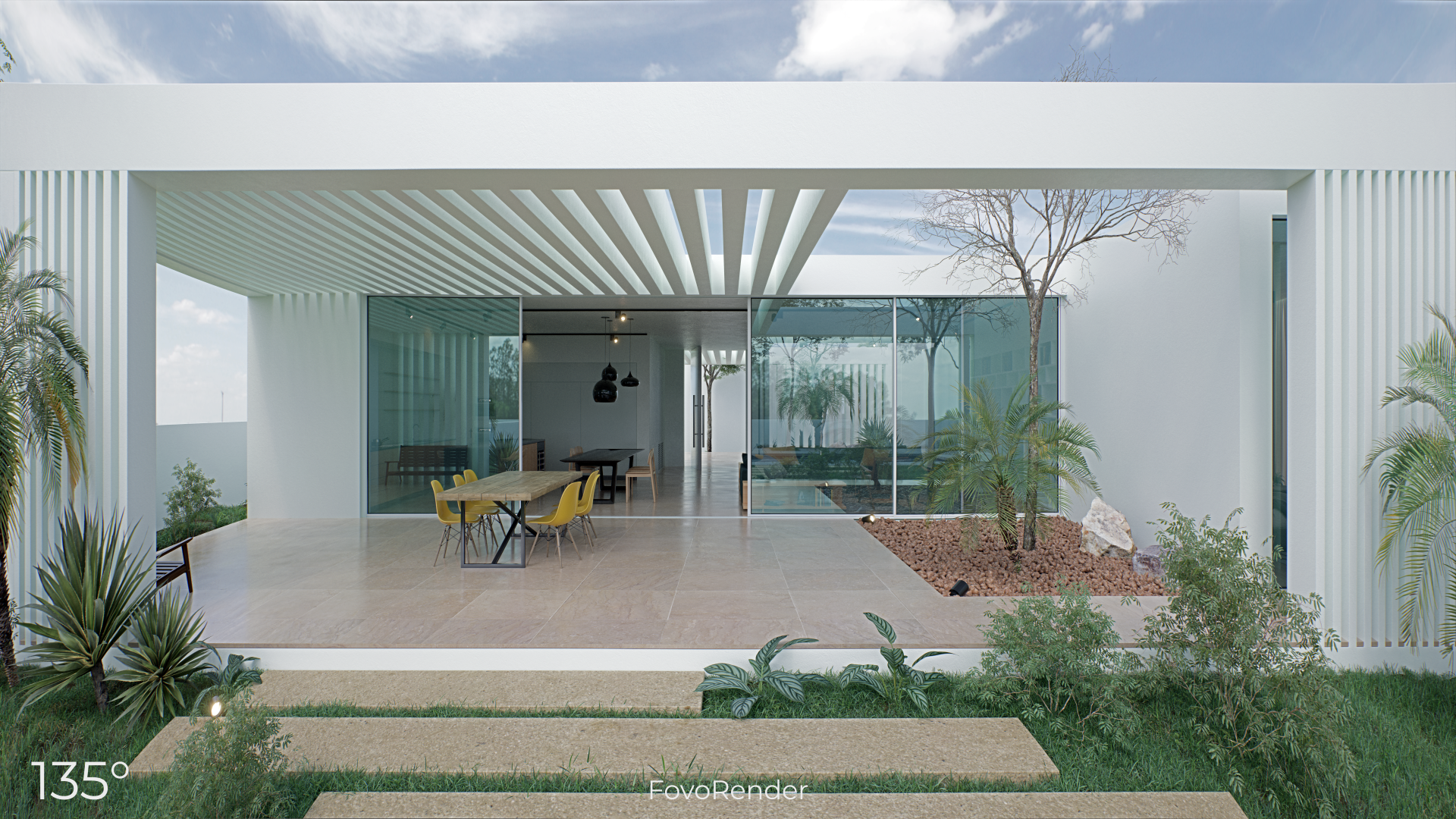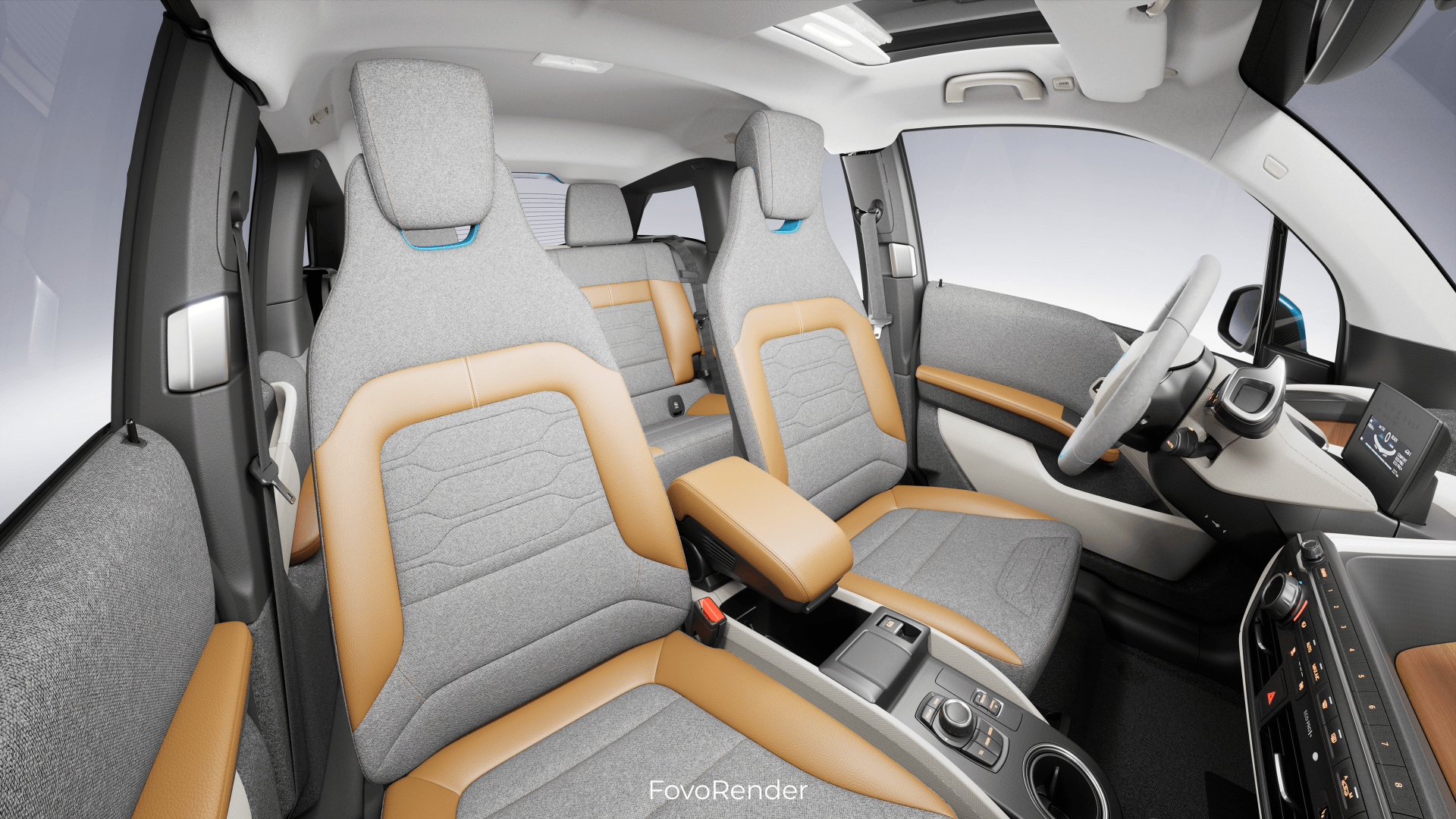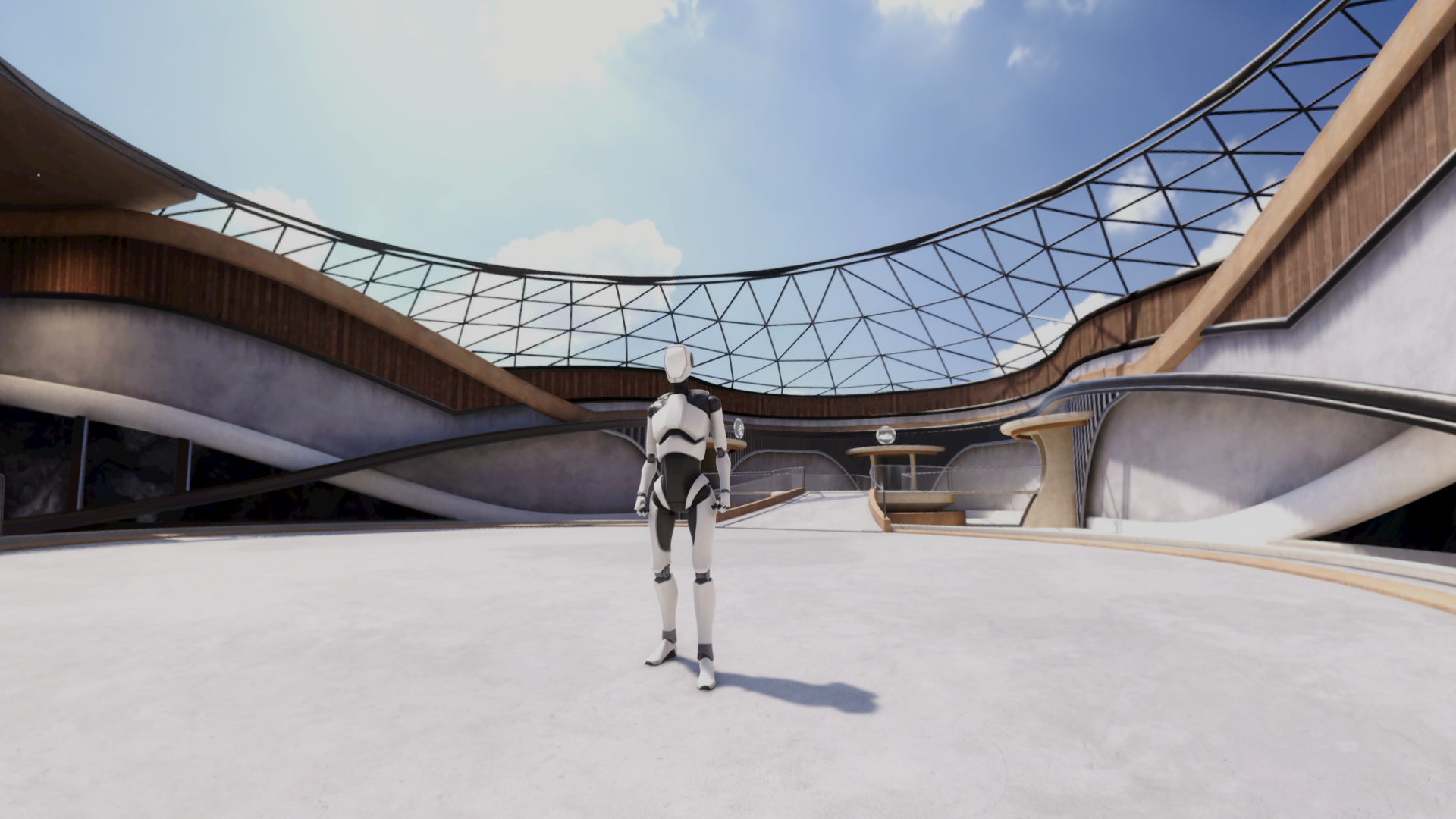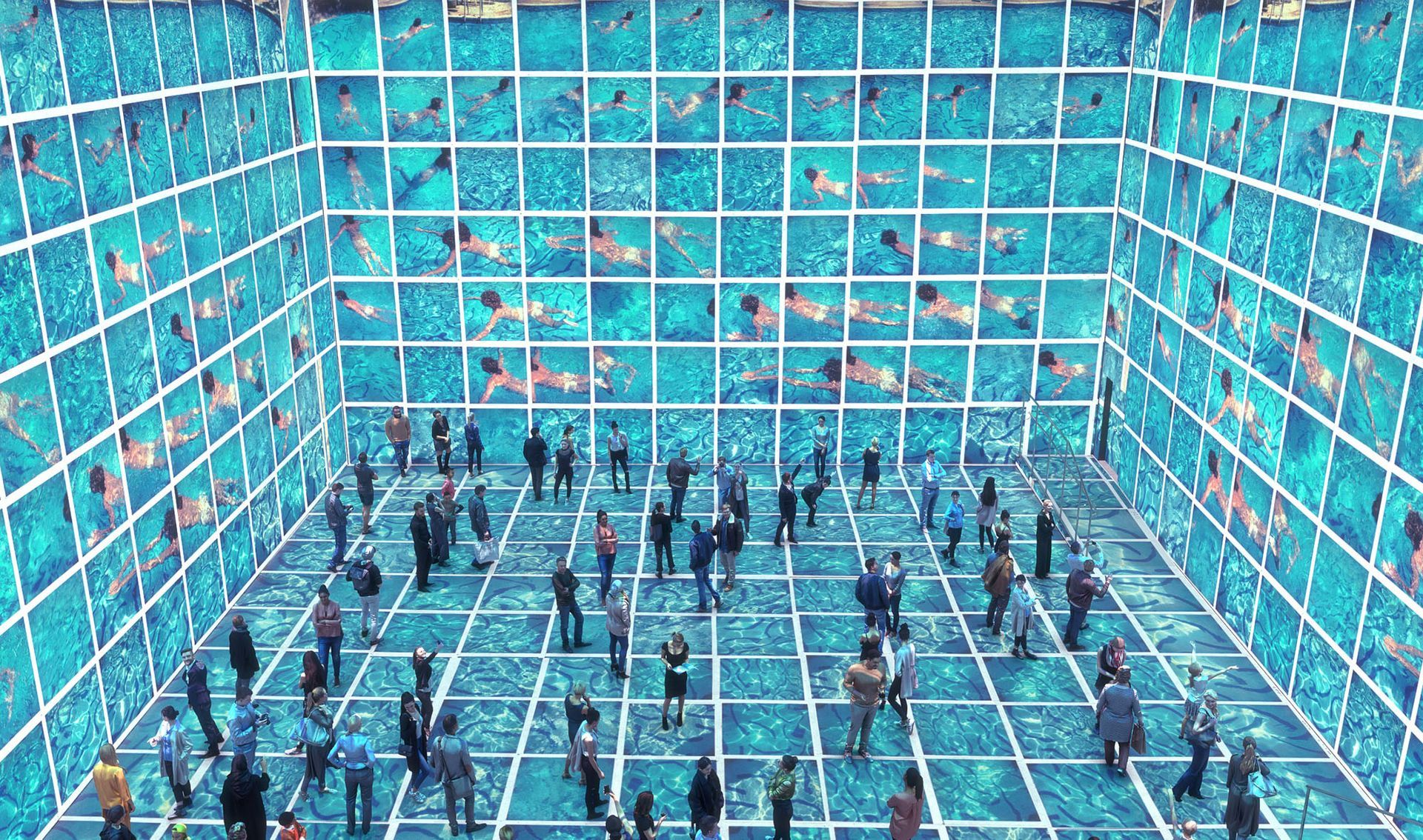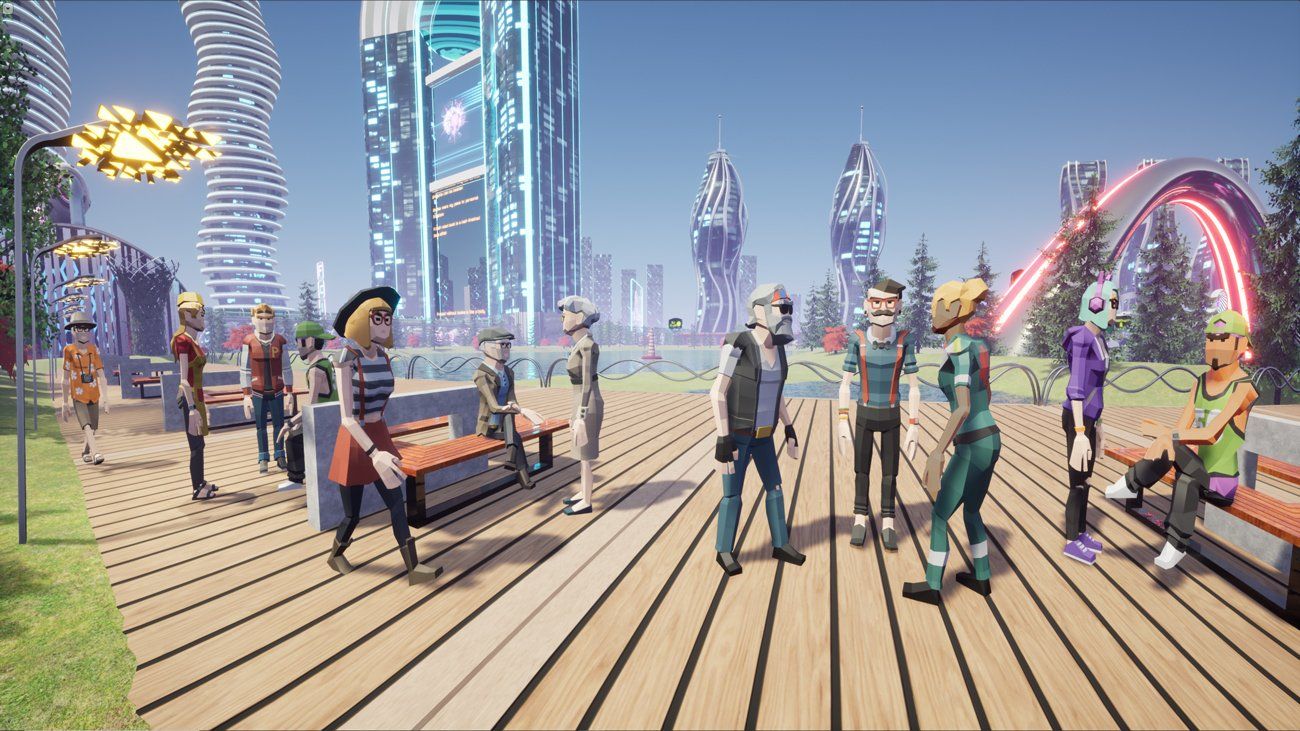Fovotec collaborates with future-of-work platform Bublr to improve metaverse experience in WebXR
Bublr is an innovative virtual meeting space designed to make collaboration and social interaction more natural and intuitive. The platform represents users with live video avatars that can freely explore 3D spaces in real time and connect with others to meet, work and play.
It’s crucial for a successful metaverse experience that the images should look as natural as possible. Unfortunately, the linear perspective geometry used to render most 3D spaces creates unnatural-looking distortions, especially at wide fields of view.
As the team at Bublr realised, this problem is especially severe when it comes to representing human faces. We might not notice or care if a desk looks a bit stretched, but when it’s our own face, or that of a colleague, then we do.
When Bublr reached out to Fovotec we were happy to let them know that there is a solution. The FovoRender process bypasses the normal linear perspective calculations that standard 3D engines use and replaces them with a novel, patent-protected set of calculations based on the structure of human vision.
In practice this means that a version of Bublr running with Fovorender can show much wider fields of view—which improves interaction and navigation—while keeping the natural appearance of objects—including the faces of the avatars themselves.
The FovoRender solution is particularly effective for WebXR delivery as it is designed to work on standard screens—phones, laptops, and large displays—and can be configured to suit the display size.
Bublr and Fovotec are now working together on developing a FovoRender version of the Bublr platform in the
BabylonJS rendering engine and we hope to share more results soon.
Proof of concept images follow showing some of the Bublr 3D assets running within our Unreal 4.27 FovoRender integration at various fields of view from a standard 90 degree horizontal up to an extreme 150 degrees.
In each set of comparisons the faces of the avatars will be more distorted and the center of the 3D space will feel smaller and further away in the linear view compared to the FovoRender version, where both the faces and the 3D space will have a far more natural experience.
